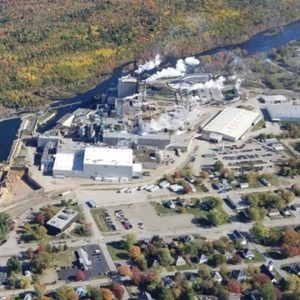Air Emissions Permitting
Woodland Pulp, LLC
2018 (six months)
SME Services: Process review, technology review, permitting
Woodland Pulp LLC owns and operates a semi-integrated, kraft pulp mill in eastern Maine. In 2018, Woodland sought to permit the construction and operation of two new tissue machines and re-permit two existing tissue machines to relax self-imposed licensing restrictions. As a major source of air pollutants, this permitting action resulted in a major modification with significant emission increases of particulate matter (PM), nitrogen oxides (NOx), carbon monoxide (CO), volatile organic compounds (VOC), and greenhouse gases (GHG).
Challenges
Project Acceleration – Because Maine is in the Ozone Transport Region (OTR), projects that are classified as Major for NOx or VOC require the application of the Lowest Achievable Emission Rate (LAER) and obtaining offsetting emissions. In 2014, the EPA granted Maine a waiver from the NOx LAER and offset requirements; however, mid-project, Woodland learned that the NOx waiver would no longer be valid following the finalization of the EPA’s 2015 Ozone Designations. To avoid LAER and offset requirements for NOx, Woodland needed to receive a final permit before the 2015 standard became effective in August 2018.
VOC Offsets –The Northeast offset credit market is scarce, with offsets for VOC and NOx costing up to $10,000 per ton of pollutant. SME prepared a successful application to certify 185 tons of VOC and NOx credits from the shutdown of a nearby Woodland facility, saving Woodland significant money and time.
Emissions Modeling – Applications for major modifications must include an analysis demonstrating that the project will not exceed ambient air quality and increment standards. Woodland last completed mill-wide modeling in 1999, before new and more stringent standards were established for NOx, SO2, and PM2.5 . SME developed emission model inputs and partnered with a local firm to complete the modeling which resulted in Woodland taking on slightly more stringent emission limits for some pulp mill sources. In addition, because Woodland is located within 50 km of two federally protected lands, the U.S. Fish and Wildlife Service required Woodland to conduct a visual plume impact analysis for one of the areas. The analysis results convinced the National Park Service that additional analyses were not required for the other area, as it is located downwind and farther away.
Project Outcome and Value Added
SME’s excellent relationship with Woodland, project partners, and MEDEP allowed expediting of a very challenging project. The entire permitting process was completed in approximately six months, about half the typical length of time. Approval of the final permit for all four machines was granted in July 2018.
